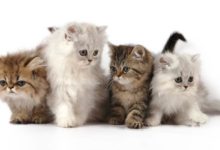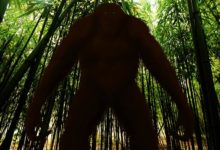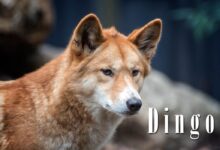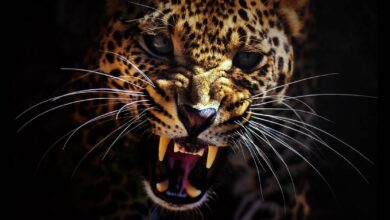The secretarybird, secretary bird (Sagittarius serpentarius)
The African savanna is home to some of the most awe-inspiring creatures on the planet, but few are as striking as the secretarybird (Sagittarius serpentarius). With its elegant feathers and distinctive crest, this majestic bird of prey stands tall and proud, ready to take on any challenge that comes its way. From its lightning-fast strikes to its remarkable hunting techniques, the secretarybird is a true marvel of nature that never fails to capture the imagination. Join us as we take a closer look at this magnificent bird and discover the secrets of its survival in one of the world’s toughest environments.
The secretarybird (Sagittarius serpentarius) is a large bird of prey that can grow up to 1.3 meters (4.3 feet) tall and weigh up to 4 kilograms (8.8 pounds). Its long legs, which can be up to 1 meter (3.3 feet) in length, are specially adapted for hunting in the African savanna, where it inhabits grasslands, open plains, and savanna woodlands.
The secretarybird is a distinctive bird with a crest of black feathers on its head that resemble quill pens, which gave it its name. Its body is covered in gray feathers, and its wings and tail are black. The bird has a sharp, hooked beak and piercing eyesight that allow it to spot prey from far away.

A Close Look at the Secretarybird
As a skilled hunter, the secretarybird is known for its unique hunting technique. It walks through the grasslands and savanna, using its strong legs and sharp talons to kick and stomp on prey, such as snakes and small mammals, until they are incapacitated. It then devours them whole, swallowing them headfirst.
The secretarybird is also known for its impressive speed and agility, which it uses to evade predators such as hyenas and eagles. With its powerful wings, it can take to the air and fly up to 20 meters (65 feet) in a single bound.
The secretarybird is a fascinating and striking bird that is well-adapted to the harsh conditions of the African savanna. Its unique hunting technique, impressive physical abilities, and distinctive appearance make it a true marvel of nature.
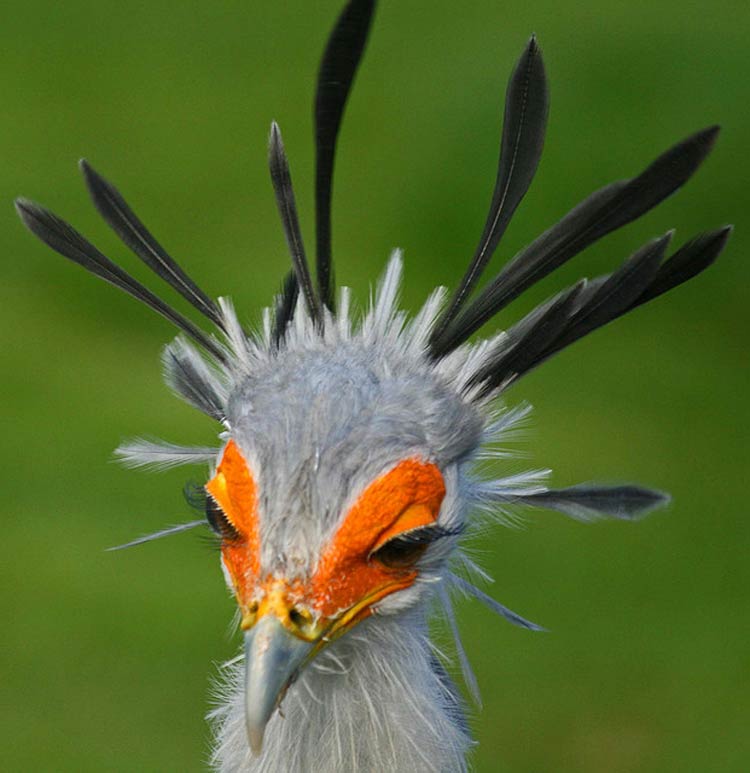
Taxonomy
The secretarybird (Sagittarius serpentarius) is a member of the family Sagittariidae, which is a family of birds of prey that includes only one other species, the black-and-chestnut eagle (Spizaetus isidori). The Sagittariidae family was once thought to be closely related to the family Accipitridae, which includes eagles, hawks, and vultures, but recent genetic studies have shown that the two families are not as closely related as previously thought.
Instead, the Sagittariidae family is now considered to be part of a larger group of birds of prey known as the Falconiformes, which also includes falcons, caracaras, and other birds of prey. Within the Falconiformes, the Sagittariidae family is most closely related to the family Accipitridae, which is a large and diverse family of birds of prey that includes over 200 species worldwide.
The evolutionary relationship between the secretarybird and other raptors is still a topic of debate among scientists. Some studies suggest that the secretarybird may have diverged from other raptors as early as 50 million years ago, while others suggest that it may have diverged more recently, around 25 million years ago. Regardless of its exact evolutionary history, the secretarybird is a unique and fascinating member of the Falconiformes that has evolved many distinctive adaptations for hunting and survival in the African savanna.
Scientific classification
- Kingdom: Animalia
- Phylum: Chordata
- Class: Aves
- Order: Accipitriformes
- Family: Sagittariidae
- Genus: Sagittarius
- Species: Sagittarius serpentarius

Basic Facts About the Secretarybird (Sagittarius serpentarius)
- The secretarybird is a large bird of prey that can grow up to 1.3 meters (4.3 feet) tall and weigh up to 4 kilograms (8.8 pounds).
- It has a wingspan of around 2 meters (6.6 feet).
- The bird is found in the African savanna, where it inhabits grasslands, open plains, and savanna woodlands.
- Secretarybirds are monogamous and mate for life, with both parents sharing in the responsibility of raising their young.
- Their diet primarily consists of small mammals, such as rodents and hares, as well as snakes, lizards, and other reptiles.
- Secretarybirds are skilled hunters and use a unique technique of kicking and stomping on their prey until it is incapacitated.
- They have been known to use their strong beaks and talons to defend themselves against predators, such as hyenas and eagles.
- Secretarybirds are non-migratory and are known to live up to 20 years in the wild.

Distribution and habitat
The secretarybird (Sagittarius serpentarius) is found exclusively in sub-Saharan Africa, where it inhabits a variety of habitats, including grasslands, savannas, open plains, and thornbush. They are most commonly found in eastern and southern Africa, including countries such as Kenya, Tanzania, South Africa, and Botswana.
In general, secretarybirds prefer open habitats with scattered trees and tall grasses, as this allows them to spot prey from a distance and move quickly and efficiently through the landscape. They are also known to inhabit agricultural areas and farmland, where they can find rodents and other small prey.
Within their habitat, secretarybirds often nest on the ground or in the branches of tall trees, and may also roost in trees or on rocks. They are non-migratory birds and do not typically travel long distances, although they may move around within their home range in search of food or nesting sites. Overall, the secretarybird is a highly adaptable species that can thrive in a range of habitats across sub-Saharan Africa.

Characteristics
Appearance and Size
The secretarybird (Sagittarius serpentarius) is a large, striking bird of prey with a unique and distinctive appearance. Here are some of its physical features:
- The bird can grow up to 1.3 meters (4.3 feet) tall and weigh up to 4 kilograms (8.8 pounds).
- Its wingspan can be around 2 meters (6.6 feet) wide.
- The bird has long, bare legs that are adapted for walking and running on the ground.
- The feathers on the back, wings, and tail are black, while the body and head are covered in gray feathers.
- The bird’s head has a crest of black feathers that resemble quill pens, which gave it its name.
- The beak is long, curved, and sharp, and is used to catch and kill prey.
- The eyesight is sharp and piercing, allowing the bird to spot prey from far away.
- Male and female secretarybirds have similar appearance, although males are generally slightly larger than females.
Overall, the secretarybird is a unique and striking bird with a distinctive appearance that has made it a favorite among bird watchers and wildlife enthusiasts.

Behavior, Lifestyle and ecology
The secretarybird (Sagittarius serpentarius) is a diurnal bird of prey with unique and fascinating behavior and lifestyle. Here are some of the key aspects of its behavior and ecology:
- Secretarybirds are primarily terrestrial birds and are known for their ability to walk and run long distances on the ground, using their long, bare legs and sharp talons to catch prey.
- They are also skilled fliers and may use their wings to help them gain speed and maneuverability on the ground.
- Secretarybirds are social birds and are often seen in pairs or small family groups, although they may also be solitary.
- They are monogamous and mate for life, with both parents sharing in the responsibility of raising their young.
- The birds build large, sturdy nests of sticks and other materials, which they may use for many years.
- They are opportunistic hunters and feed on a variety of prey, including small mammals, such as rodents and hares, as well as snakes, lizards, and other reptiles.
- Secretarybirds are skilled hunters and use a unique technique of kicking and stomping on their prey until it is incapacitated, which is known as “mosaic hunting”.
- They are also known to use their strong beaks and talons to defend themselves against predators, such as hyenas and eagles.
- Secretarybirds are non-migratory and are known to live up to 20 years in the wild.
Overall, the secretarybird is a fascinating and adaptable bird of prey with a unique and complex behavior and lifestyle. Its combination of terrestrial and aerial abilities, as well as its skilled hunting techniques, make it a formidable predator in the African savanna ecosystem.

Diet
The secretarybird (Sagittarius serpentarius) is a carnivorous bird of prey that feeds primarily on small mammals, such as rodents and hares, as well as snakes, lizards, and other reptiles. Its diet can vary depending on the availability of prey in its habitat, but it is generally an opportunistic hunter that will take advantage of any suitable food source.
One of the secretarybird’s unique hunting techniques is known as “mosaic hunting”, in which it walks through grasslands or other open areas, looking for prey. When it spots a potential meal, it will use its long, powerful legs and sharp talons to quickly catch and kill the animal, often by kicking and stomping on it repeatedly until it is incapacitated.
In addition to small mammals and reptiles, the secretarybird may also eat insects, birds, and carrion, particularly during times when other food sources are scarce. Its sharp beak and strong talons allow it to tear apart prey and extract meat, which it swallows whole.
The secretarybird’s diet is varied and adaptable, allowing it to survive in a range of habitats across sub-Saharan Africa. Its unique hunting techniques and formidable predatory abilities make it a top predator in its ecosystem.

Reproduction and parenting
The secretarybird (Sagittarius serpentarius) is a monogamous bird that mates for life. Breeding pairs typically build large, flat nests made of sticks and other materials, which they may use for many years.
Breeding season varies depending on location, but generally occurs during the dry season when food is more abundant. During courtship, the male will perform aerial displays and bring nesting materials to the female, who will then construct the nest.
After the female lays 1 to 3 eggs, both parents share in the responsibility of incubating them for about 45 days. The chicks are born with a white downy coat and are fully dependent on their parents for food and protection.
Both parents feed the chicks by regurgitating food and tearing it into small pieces. The chicks grow rapidly, reaching full size in about 3 months. At this point, they leave the nest, but continue to receive food from their parents for several more weeks.
The secretarybird’s parenting strategy is characterized by a high level of parental investment, with both parents taking an active role in caring for their young. This level of parental care likely contributes to the bird’s high reproductive success and the long-term stability of its breeding populations.
Overall, the secretarybird’s reproductive and parenting behavior is complex and highly adapted to its African savanna habitat, ensuring the survival of the species in a challenging and dynamic ecosystem.

Predators and Threats
As top predators in their ecosystem, adult secretarybirds (Sagittarius serpentarius) have few natural predators. However, their eggs and young chicks are vulnerable to predation by a variety of animals, including snakes, mongooses, jackals, and birds of prey such as eagles.
In addition to natural predation, secretarybirds face a number of human-caused threats. One of the biggest threats to the species is habitat loss and degradation due to agricultural expansion, urbanization, and other forms of human development. As grasslands and other open habitats are converted to farmland or other uses, the bird’s prey base and nesting sites become scarce, reducing its overall population size.
Secretarybirds are also sometimes hunted or persecuted by humans, particularly in areas where they are seen as a threat to livestock or crops. This can further reduce the bird’s population size and limit its range.
Another threat to the secretarybird is poisoning, which occurs when the bird ingests poisoned bait intended for other animals. This is a common problem in some areas where farmers or ranchers use poison to control predators or pests.
Finally, climate change may also pose a threat to the secretarybird and its habitat, as changing weather patterns and increased drought may alter the bird’s food sources and nesting sites.
Overall, the secretarybird faces a range of threats from human activities, habitat loss and degradation, predation, and climate change. Conservation efforts aimed at protecting the species and its habitat are critical to ensuring its long-term survival.

Interactions with humans
The secretarybird (Sagittarius serpentarius) has a long history of interaction with humans, both positive and negative. In some African cultures, the bird is considered a symbol of good luck, strength, and independence, and is often featured in traditional art and folklore.
However, the bird has also been hunted or persecuted by humans, particularly in areas where it is seen as a threat to livestock or crops. This can lead to declines in its population size and range, and has prompted conservation efforts aimed at reducing human-wildlife conflicts and promoting coexistence.
In addition to its cultural and conservation significance, the secretarybird has also been studied by scientists and researchers interested in its unique biology and behavior. For example, the bird’s powerful legs and unique hunting techniques have inspired engineers and roboticists in the development of new types of robots and other technology.
Finally, the secretarybird is also a popular attraction for birdwatchers and wildlife enthusiasts, who travel to Africa to observe the bird in its natural habitat. Ecotourism can provide important economic benefits to local communities and can help to promote conservation efforts aimed at protecting the species and its habitat.
Overall, the secretarybird’s interactions with humans are complex and multifaceted, reflecting the bird’s cultural, ecological, and scientific importance. Conservation efforts that prioritize the bird’s long-term survival and promote sustainable human-wildlife coexistence are essential to ensuring its continued presence in the African savanna.

Population
The population of the secretarybird (Sagittarius serpentarius) is currently considered to be stable, but is thought to be declining in some areas due to habitat loss, persecution, and other threats.
The species is widespread across sub-Saharan Africa, but is generally found in low densities across its range. Population estimates are difficult to obtain due to the bird’s elusive nature and the vastness of its habitat, but recent surveys suggest that there may be as few as 5,000 to 10,000 mature individuals remaining in the wild.
The International Union for Conservation of Nature (IUCN) currently lists the secretarybird as a species of “Least Concern,” reflecting its overall population stability and wide geographic range. However, the bird is also considered to be a species of conservation concern in some parts of its range, and is protected by law in several African countries.
Conservation efforts aimed at protecting the secretarybird and its habitat are critical to ensuring its long-term survival. This may include measures such as habitat restoration and protection, reducing human-wildlife conflicts, and promoting sustainable land use practices. By working to protect this iconic African bird, we can help to preserve the unique biodiversity and cultural heritage of the African savanna.

Status and conservation
The secretarybird (Sagittarius serpentarius) is currently classified as a species of “Least Concern” by the International Union for Conservation of Nature (IUCN), reflecting its relatively stable overall population and wide geographic range.
However, the species is facing a range of threats from habitat loss and degradation, persecution, and other factors, particularly in certain parts of its range. In response, a number of conservation efforts have been undertaken to protect the species and promote its long-term survival.
One of the key strategies for protecting the secretarybird is to preserve its habitat and reduce human-wildlife conflicts. This may involve working with local communities to develop sustainable land use practices, promoting conservation education and awareness, and protecting key habitat areas from development or other threats.
In addition to habitat protection, efforts are also underway to monitor the bird’s population size and distribution, and to develop and implement conservation plans that address the specific threats facing the species in different parts of its range. This may include measures such as anti-poaching patrols, habitat restoration and management, and other targeted interventions.
Finally, the secretarybird is also the subject of scientific research and monitoring aimed at better understanding its biology, behavior, and ecology. By learning more about this iconic African bird, scientists and conservationists can develop more effective strategies for protecting it and promoting its long-term survival.
Overall, the conservation of the secretarybird is a complex and multifaceted challenge that requires the collaboration and cooperation of governments, conservation organizations, local communities, and other stakeholders. By working together to protect this unique and important species, we can help to preserve the biodiversity and cultural heritage of the African savanna for generations to come.
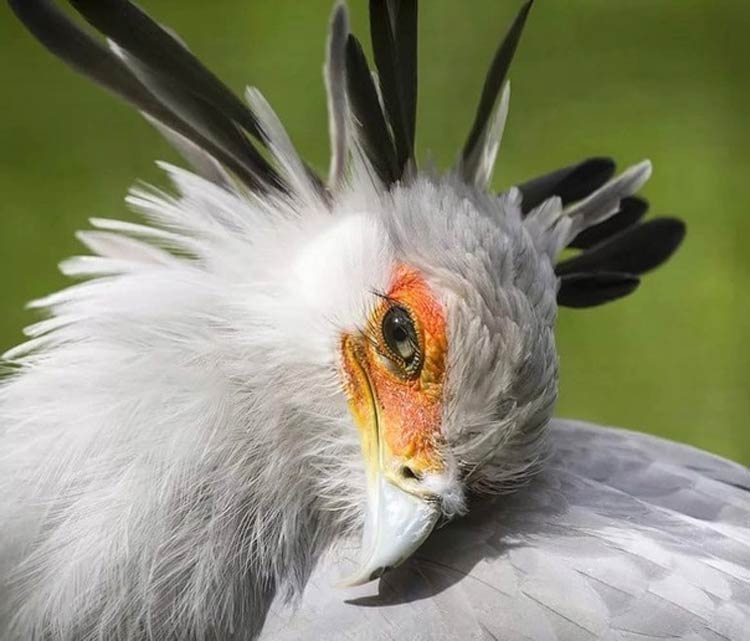
Secretarybird in numbers / dimensions
- Height: 1.3 m (4.3 ft) tall
- Length: 1.1 – 1.5 m (3.6 – 4.9 ft)
- Wingspan: 1.9 – 2.1 m (6.2 – 6.9 ft)
- Weight: 3.74- 4.27 kg (8.25 – 9.42 lbs), with a mean of 4.05 kg (8.93 lbs)
- Tarsus: on average 31 cm (12.2 in) in length
- Tail: 57 – 85 cm (22.4 – 33.5 in)
- Lifespan: In the wild, the secretarybird is believed to live for up to 20 years, although the exact lifespan is not well documented
The secretarybird is an impressive and striking bird with unique physical characteristics, including its large size, eagle-like head, and crane-like legs. These physical features make the secretarybird one of the most recognizable and memorable birds in the African savanna, and a true icon of the continent’s wildlife.
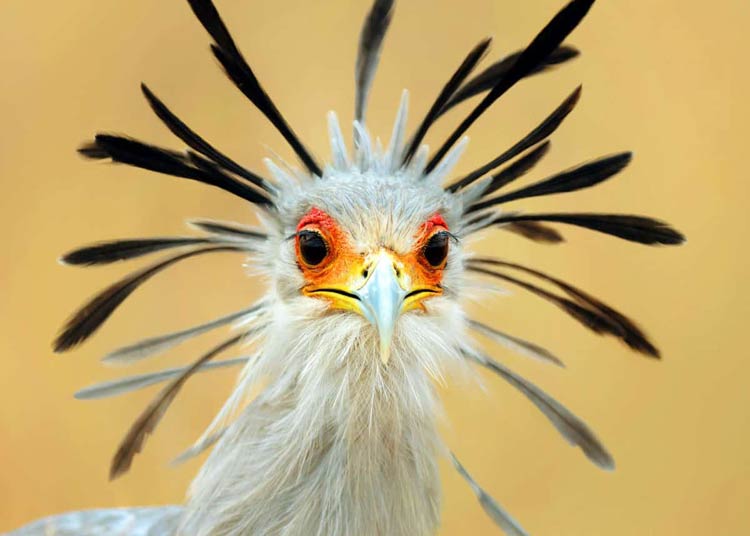
Secretarybird in culture
The secretarybird has a significant cultural and symbolic role in many parts of Africa. It is often depicted in African art and folklore, and is considered a national symbol in several countries.
For example, the secretarybird is the national bird of Sudan, and is also a national symbol of Tanzania. In the latter country, the bird appears on the country’s coat of arms, as well as on various coins and banknotes.
In traditional African folklore, the secretarybird is often depicted as a powerful and majestic creature with supernatural powers. It is associated with the sun, and is sometimes thought to have the ability to bring rain or control the weather. In some stories, the secretarybird is also portrayed as a guardian or protector of the people, able to defeat evil spirits and protect the innocent.
In modern times, the secretarybird has also become a popular symbol of African conservation and wildlife protection. It is featured prominently in many conservation campaigns and awareness-raising efforts, and is often seen as a charismatic and iconic species that represents the beauty and biodiversity of the African savanna.
The secretarybird holds a special place in African culture and folklore, and is an important symbol of the continent’s wildlife and natural heritage. By learning more about this remarkable bird and working to protect its habitat and populations, we can help to preserve this important cultural and ecological legacy for generations to come.
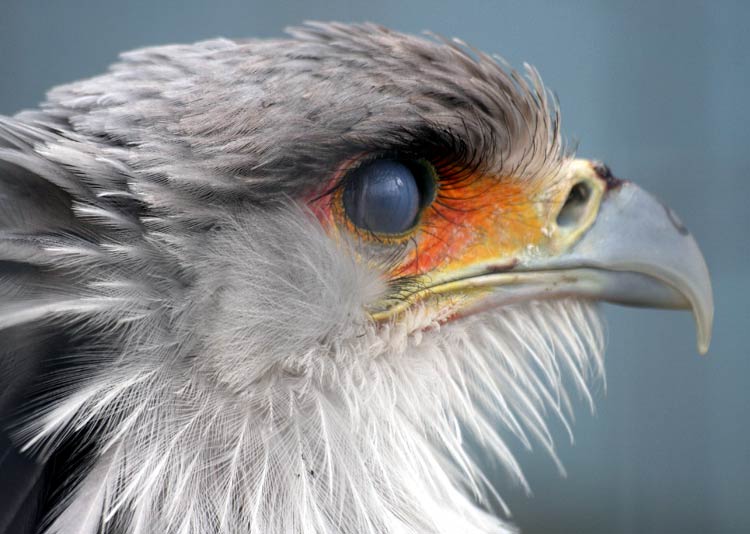
Secretarybird in movies
The secretarybird has appeared in a number of movies and documentaries over the years, often as a representative of the African savanna and its unique wildlife.
One notable example is the 1966 film “Born Free,” which tells the story of a lioness named Elsa and her eventual release back into the wild. The secretarybird appears briefly in the film as a background character, but its appearance helps to convey the sense of wildness and natural beauty of the African landscape.
The secretarybird has also been featured in several wildlife documentaries, such as “The Hunt” and “Planet Earth II,” which explore the fascinating behaviors and adaptations of this remarkable bird. These documentaries showcase the secretarybird’s hunting techniques, its impressive physical abilities, and its role in the larger ecosystem of the African savanna.
In addition, the secretarybird has been referenced in popular culture in other ways, such as in video games like “Assassin’s Creed: Origins” and “Far Cry 2,” where the bird appears as a collectible item or as part of the game’s wildlife ecosystem.
Overall, the secretarybird’s appearances in film and media help to raise awareness of this unique and fascinating bird, and help to promote a deeper appreciation of the natural world and its many wonders.

The secretarybird in captivity
The secretarybird (Sagittarius serpentarius) is a popular bird of prey species kept in captivity around the world. They are often housed in zoos and aviaries where they can be observed up close by the public. While they are not considered fully domesticated, captive-bred individuals can be trained for falconry and educational programs.
In captivity, the secretarybird requires a spacious and secure aviary or enclosure to accommodate its large size and active lifestyle. They need plenty of space to exercise their powerful legs and wings, as well as perches and hiding places to provide mental stimulation and privacy.
Captive secretarybirds are typically fed a diet of fresh meat, such as rats, mice, chicks, quail, and rabbits, supplemented with vitamins and minerals. They require regular exercise, social interaction, and enrichment activities to maintain their physical and mental well-being.
Breeding secretarybirds in captivity can be challenging, but with proper care and management, it is possible to establish a sustainable population for conservation purposes. Zoos and wildlife centers around the world are working together to promote captive breeding and reintroduction programs for this threatened species.

Interesting facts about secretarybird
- The secretarybird is the only bird of prey that is exclusively terrestrial, meaning it spends its entire life on the ground.
- The name “secretarybird” comes from the bird’s distinctive crest of feathers on its head, which some people say resembles the quill pens that secretaries used to tuck behind their ears.
- Secretarybirds are known for their impressive hunting skills, which include stomping on prey with their strong legs and using their sharp beaks to deliver deadly blows.
- Despite their size and powerful appearance, secretarybirds are surprisingly agile and can run at speeds of up to 30 miles per hour (48 kilometers per hour).
- Secretarybirds are monogamous, meaning they mate for life and often work together to build their nests and raise their young.
- The secretarybird has a unique defense mechanism that involves kicking its legs out to ward off potential predators, including snakes and other birds of prey.
- The secretarybird has a long lifespan of up to 20 years in the wild, and can live even longer in captivity.
- The secretarybird has a complex system of communication that includes various vocalizations, body postures, and visual displays.
- Secretarybirds are considered a “flagship species” for African conservation efforts, meaning that they serve as a symbol for the larger effort to protect the African savanna and its unique wildlife.
- Secretarybirds have appeared in various forms of African art and folklore for centuries, and are considered an important cultural and symbolic species in many parts of Africa.

Q&A (questions and answers) about secretarybird
Q: What is a secretarybird?
A: The secretarybird is a large, terrestrial bird of prey found in the savannas and grasslands of sub-Saharan Africa
Q: What does a secretarybird look like?
A: The secretarybird has a distinctive appearance, with an eagle-like head and body on crane-like legs. It stands about 1.3 m tall and has a length of between 1.1 and 1.5 m, with a wingspan of between 1.9 and 2.1 m
Q: What does a secretarybird eat?
A: The secretarybird primarily eats small mammals such as rodents, hares, and mongooses, as well as snakes and other reptiles
Q: How does a secretarybird hunt?
A: The secretarybird uses a variety of hunting techniques, including stomping on prey with its strong legs and using its sharp beak to deliver deadly blows. It is also known to chase prey on foot, and can run at speeds of up to 30 miles per hour.
Q: What is the lifespan of a secretarybird?
A: Secretarybirds can live up to 19 years in the wild, and even longer in captivity
Q: Where can you find secretarybirds?
A: Secretarybirds are found in the savannas and grasslands of sub-Saharan Africa, from Senegal and Sudan to South Africa.
Q: What is the conservation status of the secretarybird?
A: The secretarybird is classified as “Vulnerable” by the International Union for Conservation of Nature (IUCN), due to habitat loss, hunting, and other threats.
Q: What is the significance of the secretarybird in African culture?
A: The secretarybird is considered an important cultural and symbolic species in many parts of Africa, and has been featured in various forms of African art and folklore for centuries. It is also a “flagship species” for African conservation efforts.
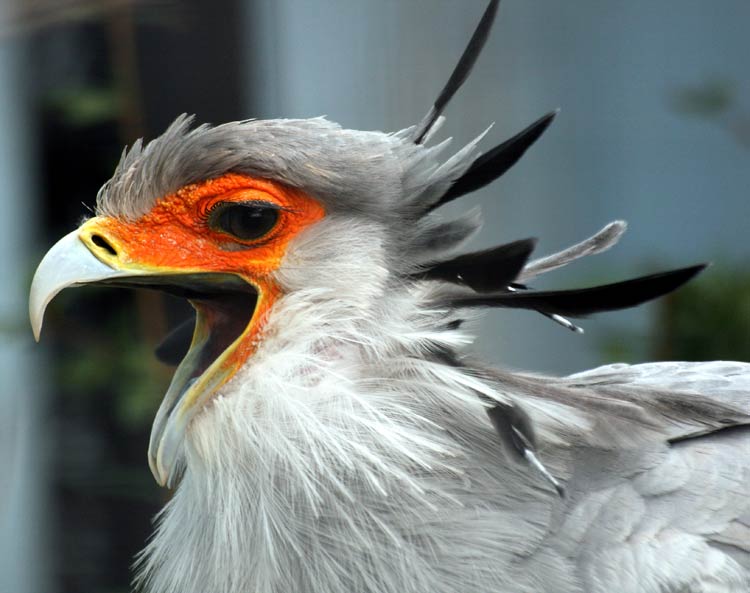
Recommended
- African lion
- Asian lion
- African elephant
- African forest elephant
- Asian elephant
- Moose
- Owls
- Parrots
- Giraffe
- Gorillas
- Zebroid
- Zebra
- Giant anteater
- Lizards
- Toucans
- Lemurs



